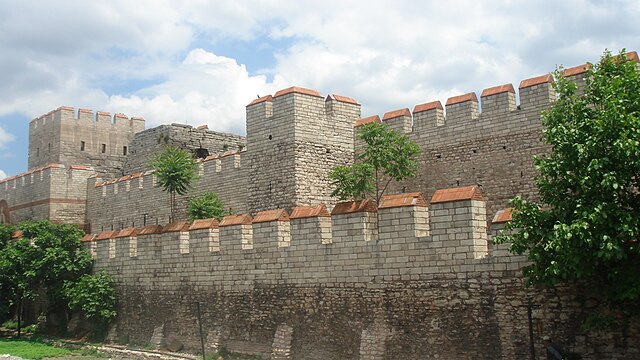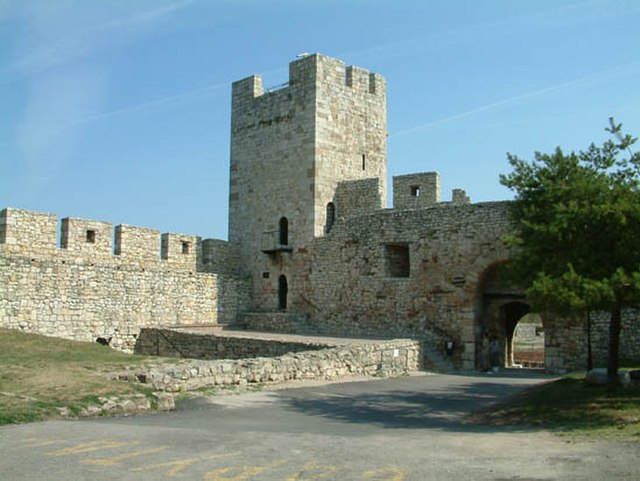The fall of Constantinople, also known as the conquest of Constantinople, was the capture of the capital of the Byzantine Empire by the Ottoman Empire. The city was captured on 29 May 1453 as part of the culmination of a 53-day siege which had begun on 6 April.
The siege of Constantinople (1453), French miniature by Jean Le Tavernier after 1455.
Restored Walls of Constantinople
The chain that closed off the entrance to the Golden Horn in 1453, now on display in the İstanbul Archaeology Museums.
Modern painting of Mehmed and the Ottoman Army approaching Constantinople with a giant bombard, by Fausto Zonaro.
The Serbian Despotate was a medieval Serbian state in the first half of the 15th century. Although the Battle of Kosovo in 1389 is mistakenly considered the end of medieval Serbia, the Despotate, a successor of the Serbian Empire and Moravian Serbia, lasted for another sixty years, experiencing a cultural, economic, and political renaissance, especially during the reign of Despot Stefan Lazarević. After the death of Despot Đurađ Branković in 1456, the Despotate continued to exist for another three years before it finally fell under Ottoman rule in 1459.
Despot's Gate in Belgrade, built by Despot Stefan Lazarević
Smederevo Fortress, capital of the Serbian Despotate
Vršac Castle was founded by Branković
Despot Đurađ's coat of arms, Prussian ed. Chronicle of the Council of Constance (before 1437)








